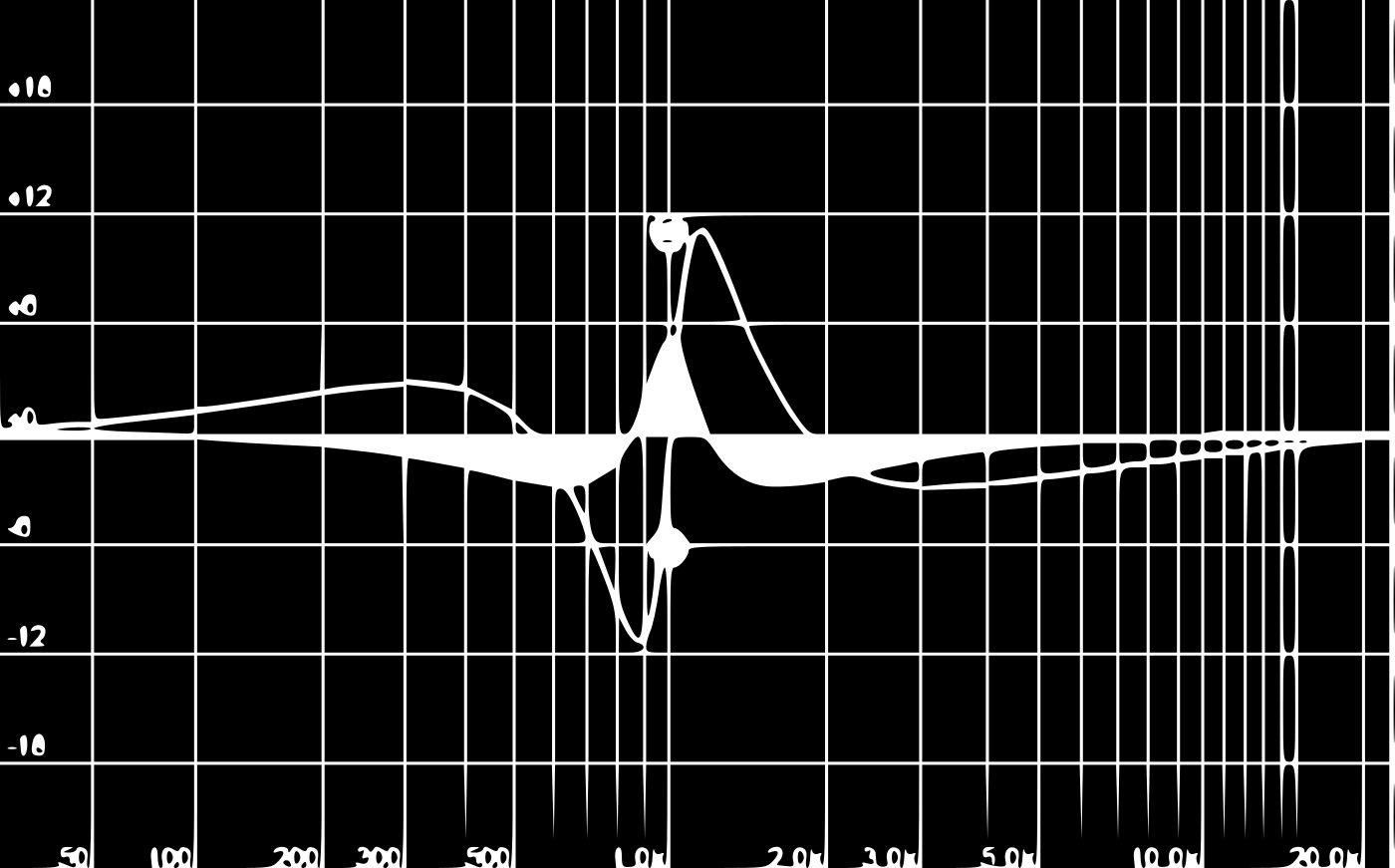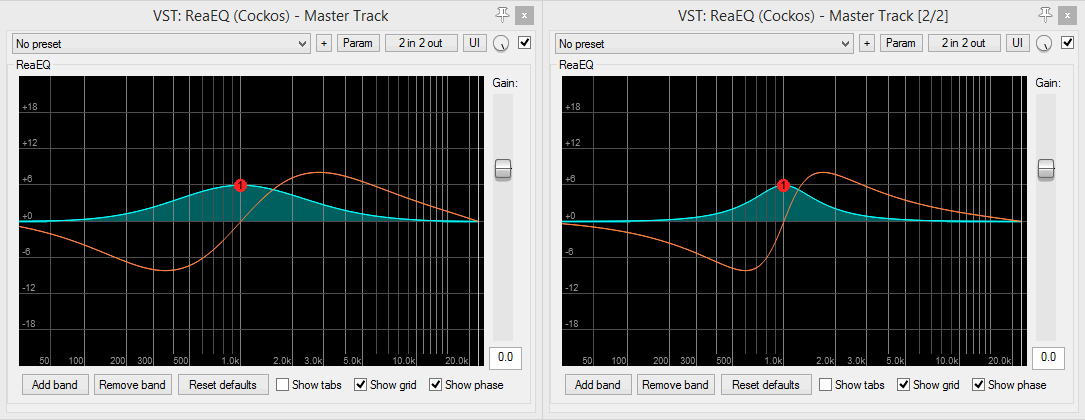Or…how you can learn to stop worrying and love your EQ.
Please Remember:
The opinions expressed are mine only. These opinions do not necessarily reflect anybody else’s opinions. I do not own, operate, manage, or represent any band, venue, or company that I talk about, unless explicitly noted.

 Want to use this image for something else? Great! Click it for the link to a high-res or resolution-independent version.
Want to use this image for something else? Great! Click it for the link to a high-res or resolution-independent version.There’s a famous “Rane Note” out there which discusses the myth of “minimum phase.” You might want to read it. Even if you do read it, though, it’s possible to be confused. The confusion seems to come from a misunderstanding regarding the scope of the conversation – and also from misunderstandings regarding phase.
With phase being a more fundamental issue, it seems best to start there.
Set Phasers To Kill!
Some people hear the word “phase” and come dangerously close to an aneurysm. They panic. They have learned to equate phase exclusively with problems.
Phase issues can indeed cause problems. Yes, phase issues are one of the primary reasons why collecting a whole pile of speakers and spraying sound everywhere in a room is NOT a recipe for success with a PA system.
The thing is, though, that phase shift is a natural occurrence in all sorts of ways, and can be used as a very handy tool with audio systems. It’s like “The Force” from “Star Wars.” It is not, in itself, good or evil. It can be used well or badly, to your benefit or detriment. As stated in the opening sentence of “Myth #6” from the Rane Note I linked: “Phase shift is not a bad word.” I believe I can offer a proof: The equalization that you use with your PA system, from channel EQ on up to system-management filters, is probably NOT phase linear.
That is to say that the large majority of “affordable, user friendly” equalizers that I have encountered are “phase warping.” They are either one of two things. The first thing they can be is an analogue filter, which creates a resonant circuit using capacitors, inductors, and resistors. The second thing they can be is a digital filter which models the behavior of a resonant circuit. In both cases, phase shift is a natural part of the design. It is, in fact, required by the design. If the design had no phase shift, it wouldn’t work as a filter. Someone would have forgotten all the capacitors and inductors (or their digital equivalents). You would have no EQ at all.
This also has to do with what I mentioned about “the scope of the conversation.”
Your “common, easy to use” EQ is almost certainly an implementation of “IIR” filters. The components “resonate” or “ring,” and they do so forever until the system is de-energized. (There is, of course, a point where the ringing is so deep in the noise floor that it’s not worth bothering about.) There are such things as internally phase-linear equalizers. These equalizers use FIR filters, which do not rely on feedback for operation and can be constructed to operate without phase-shift. Because they are internally phase-linear, you CAN say that FIR based equalization is able to exhibit “less phase” than an IIR-based system. However, this statement is out of context when discussing the traditional “minimum phase” argument, which is a (pardon my crassness) pissing contest in the marketing realm of equalizers that use IIR filters. FIR implementations are outside of that context.
As an aside, I will also note that there is no such thing as a free lunch. You may have noticed that I used the words “internally phase-linear” when talking about FIR filters. I say that because FIR filters delay the signals they are working on. There is no internal phase shift because the entire bandwidth is subjected to the same delay time. However, if an FIR EQ is used, and delay compensation is neglected for unaffected signals, you will run into phase shift between the processed and unprocessed signals. The FIR-processed information will be “late.” (Whether this actually causes a real problem or not is related to your specific situation and is beyond the scope of this article.)
The Minimum Is The Maximum
Once the scope of the argument is sorted out, the second point of confusion seems – as ever – to be rooted in how products are marketed and discussed. For instance, it’s basically in-bounds for someone to say that the channel EQ on a console they use (or build) is “more musical” and “less phasey” than the channel EQ from some other mixer. People do have preferred workflows and equalizer flavors. You may also perceive that setting a channel EQ on console A to a +6 dB boost at 1 kHz sounds “less weird” than doing the same thing on console B.
But here’s the thing. I’m willing to bet that both of those consoles have channel EQs with factory-set bandwidths, and that console A’s bandwidth is wider. Here’s a simulation:
Console A is on the left, and console B is on the right. Console B uses a more selective filter, which is produced by a more abrupt phase transition. The magnitude responses (output vs. frequency) of the two filters are NOT the same, even though the center frequency selections and gain settings are the same.
I’m comfortable making my bet because of my current understanding of how IIR equalization works, as evidenced above. Everything I’ve read or experienced leads me to believe a simple, but powerful theory of operation: With an IIR EQ, a particular magnitude response REQUIRES a specific phase response. There is no getting around it. A “musical” filter with a wide bandwidth will seem “less phasey” because its phase transition is, necessarily, gentle when compared with a narrower filter. There is no magic. The manufacturer of console A has not found a way to create a filter with the same magnitude response as what you get with console B, yet also with a milder phase transition. It’s not physically possible for them to do so.
The requirement of a specific phase response to create a specific magnitude response means that the minimum phase to create a certain filter is also the maximum phase. Any other phase means that you have a different filter. You may like the different filter better, and that’s completely acceptable, but it’s not the same filter. If we changed our consoles to have a “Q” control for their equalizers, and you managed to dial up the same magnitude response on both desks, the phase response between the two would become indistinguishable.
The reason to choose any particular EQ is that it gets you where you need to go, does so easily, and does so reliably. If the fundamental operational implementation is the same, then the phase-shift involved is a non-issue. If the EQ does what you need it to, you can be assured that no more or less phase-shift than is required has been introduced.
